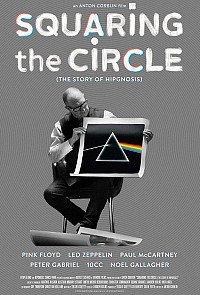| SHADOWS ON THE WALL | REVIEWS | NEWS | FESTIVAL | AWARDS | Q&A | ABOUT | TALKBACK | |||||||||||||
 Shadows off the beaten path Shadows off the beaten pathIndies, foreign, docs and shorts...
On this page:
ALL MAN: THE INTERNATIONAL MALE STORY |
THE LAST RIDER | |||||||||||||
| See also: SHADOWS FILM FESTIVAL | Last update 4.Jun.23 | |||||||||||||
|
All Man: The International Male Story Review by Rich Cline | 
| |||||||||||||
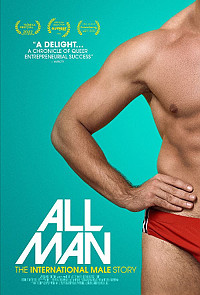 dir Bryan Darling, Jesse Finley Reed scr Peter Jones prd Peter Jones, Bryan Darling, Jesse Finley Reed narr Matt Bomer with Gene Burkard, Gloria Tomita, Eva Salas, Carson Kressley, Tony Ward, Jake Shears, Parvesh Cheena, Drew Droege, Brian Buzzini, John Watkins, Robert Goold, David Knight release US 9.Jun.23 22/US 1h23 Now streaming... |
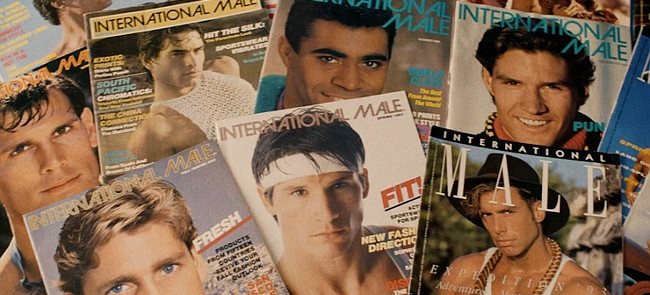 It may seem odd to make a documentary about a menswear catalog, but with its daring approach International Male redefined notions of masculinity in the 1980s and 1990s. This magazine essentially created a whole new market of young men looking for forward-thinking clothing, blurring the lines between gay and straight. The filmmakers also look beneath the almost outrageously fit surfaces, exploring pointed themes around sexuality and body consciousness. A visual masculine fantasy, International Male appealed to both straight men, who wanted to look this good, and gay men, who wanted to look at beautiful men. In his Catholic upbringing and military service, founder Gene Burkard knew how to conceal his gay identity, discovering fashion and freedom while working in Europe. Back home in the 1960s, he launched a mail-order company targeting men with his Jock Sock, then developed what was a cross between a magazine and catalog for men. In 1987, Burkard retired and sold the company, and the brand grew even bigger. Tracing the history of male fashion, the film notes how men only wore suits before World War II. Then in 1960s Europe male fashion became more flamboyant, while in America the Marlboro Man was the epitome of masculinity. And advertisers began using men's muscled bodies to sell everything, with a customer base of mainly women who wanted to dress their men up. By the 1980s, bright colours and revealing clothing were everywhere. And this trend continues to evolve. With plenty of stills and archival footage, the film documents Burkard's dream in detail, as he developed styles for men who wanted to dress in clothing that was sexier and a lot more fun. The photo shoots were designed around hedonism and aspiration, even as Burkard avoided smut. Running the company as a family, the brand promised adventure, with ranges based around travel and the military, plus the Undergear spin-off, the only part of the brand still around today. Unfolding chronologically with superb firsthand interviews, this straightforward documentary traces the evolution of masculine fashion along with pop culture and lifestyle marketing, including the impact of the Aids epidemic. International Male was the leading edge of the fitness-wear wave, with its unapologetic sensuality (see also Calvin Klein and Abercrombie & Fitch). So the film is also a striking exploration of internalised homophobia, as images appeal to men frightened of their own sexuality. And they also emboldened gay men trying to define themselves at a time when the world vilified them.
| ||||||||||||
|
The Last Rider Review by Rich Cline | 
| |||||||||||||
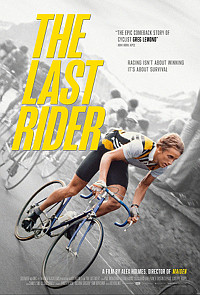 dir-scr Alex Holmes prd James Erskine, Victoria Gregory, Sam Brayshaw with Greg LeMond, Kathy LeMond, Cyrille Guimard, Pedro Delgado, Bernard Hinaut, Laurent Fignon, Raymond Poulidor release US/UK 23.Jun.23 22/UK 1h38 Now streaming... |
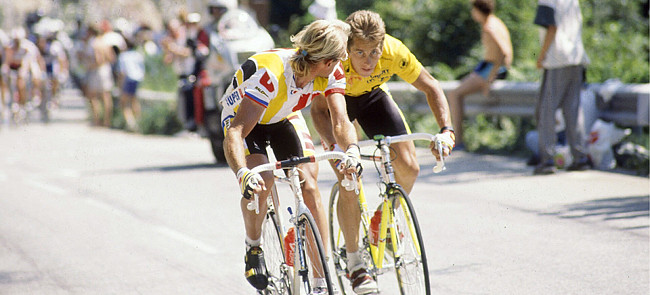 This documentary traces the career of American cyclist Greg LeMond, noting his physical and psychological challenges. Because everything is seen through his eyes, it's clearly an inside production. But LeMond's story is riveting and often inspiring. These events will be familiar to those who follow the sport, and the personal observations bring experiences to life. Although a more nuanced narrative approach would have appealed more strongly to non-fans. Discovering natural cycling abilities while riding with his father as a teen, LeMond began competitive racing in Nevada, inspired by European champions. So at 18, he joined the team led by cycling icon Bernard Hunault. LeMond quickly became a leader himself, winning the 1986 Tour d'France even as he struggled with both intense pressure within his team and lingering trauma from sexual abuse he suffered as a child. A hunting accident in 1987 nearly ended his life but, after a two-year recovery battle, he came back to win the Tour in 1989 and 1990. Essentially an extensive illustrated interview with LeMond, the film recounts his life story chronologically, illustrated with snapshots and archival footage, plus studio interviews with just three people close to him: his wife Kathy, French coach Guimard and Spanish cyclist Delgado. This structure presents a series of key races and events in vivid detail, always maintaining LeMond's perspective. The film is edited together fluidly, with a brisk sense of pace and careful depictions of notable competitions that have been reconstructed from a range of existing broadcast coverage. While Greg and Kathy describe how they were feeling throughout extraordinary personal and professional events, the film's focus on the details of the races leaves it without deeper resonance for the viewer. Cycling fans won't mind this, especially the extended retracing of the outrageously fierce competition at the 1989 Tour. This becomes the focal point of the entire film, and it adds revealing behind-the-scenes elements that contextualise and fill in the history from firsthand participants. It's fascinating to hear LeMond speak of his first Tour victory as bittersweet, eclipsed by his fight back to the top in 1989, which surprised even him. The final stages of that race are played out step by astonishing step, which gives the film a huge emotional kick, one of the greatest sporting comebacks in history. After this major centrepiece segment, filmmaker Holmes wraps up LeMond's career quickly, only briefly acknowledging the rampant drug use that devastated the sport shortly after he retired.
| ||||||||||||
|
Squaring the Circle: The Story of Hipgnosis Review by Rich Cline | 
SUNDANCE FILM FEST Now streaming...
| 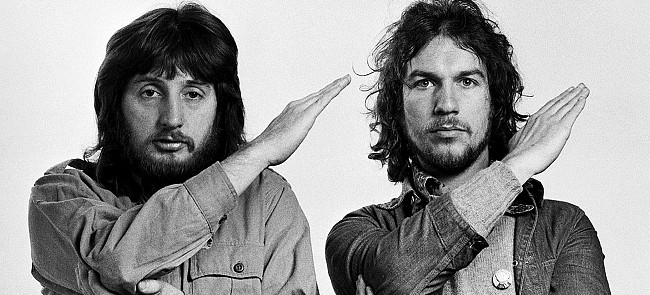 A fascinating glimpse into a lost musical era, this documentary centres on the now-iconic album covers designed by Hipgnosis, namely Aubrey "Po" Powell and Storm Thorgerson. Beautifully designed by director Anton Corbijn, the film cleverly presents a wide range of artwork, archival clips and new interviews with notable musicians. Not only do they share awesome rock-n-roll anecdotes, but they remind us how things have changed since the heyday. After meeting in Cambridge alongside the members of Pink Floyd, Po and Storm moved to London to study art, setting up their agency Hipgnosis in an office Denmark Street that became a music industry hangout. Their approach to design was unusual in that they created imagery that reflected how the music feels, rather than simply portraits of the artists. So their covers for Pink Floyd, Led Zeppelin, 10CC and others changed the way rock music looked from the late-1960s to the 1980s. Images they created still feel fresh and original today. And many are unforgettable. Almost all of the most legendary album covers from this period were created by Hipgnosis, most memorably a prism, a cow, a burning man and a floating pig for Pink Floyd. The film also traces the stories behind indelible artwork they created for Led Zeppelin, Peter Gabriel, Wings, 10CC and more. These images were created at a high cost that would be unthinkable today. Po and Storm also continually broke rules, annoyed record executives and thrilled fans in ways no one dares to do now. Corbijn assembles the film beautifully, reserving colour for the artwork and performance clips only, while interviews and some dramatic moments are shot in a high-contrast monochrome that emphasises the passage of time on the faces of the artists. Editing is fluid, recounting the story chronologically with a sometimes thrilling attention to detail, gleefully diverting to include a colourful account of music industry excess, usually relating to drugs while oddly ignoring sex. Nestled amongst these wonderful moments is the emotional story of a friendship. Together, Po and Storm were formidable creators, even as their personalities clashed horribly. Storm died in 2013, but is equally represented here through archival footage, and it's his abrasive manner that caused problems within their assembled family, creating fallouts with bands, a 12-year break from Po and, ultimately, the collapse of their company. But this film captures the magical alchemy between them that changed the industry forever.
| 
See also: SHADOWS FILM FESTIVAL © 2023 by Rich Cline, Shadows
on the Wall
HOME | REVIEWS | NEWS | FESTIVAL | AWARDS
| Q&A | ABOUT | TALKBACK | | ||||||||||


